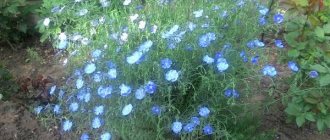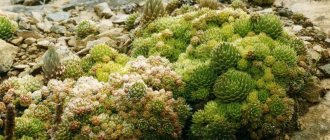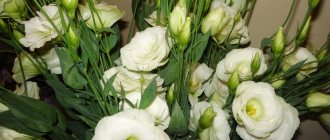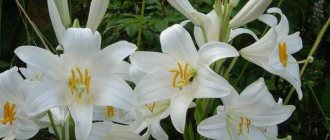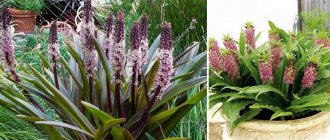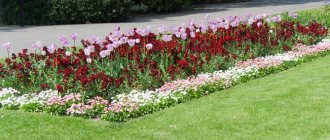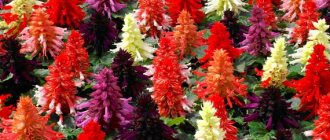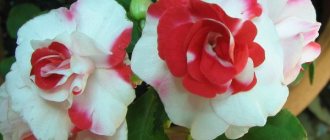Content
- 1. Description 1.1. Popular varieties
The Latin name Օrnithogalum is derived from the Greek words: ornis - bird and gala - milk.
Both the Latin and Russian names owe their creation to the shade of the perennial inflorescences - in nature they are most often white, like “bird's milk”. An exception to the rule, the exotic wild flowers of Orchid dubious are yellow, orange and even red. In English, the plant is poetically called the “Star of Bethlehem”, Star of Bethlehem, for the shape of small flowers, similar to a guiding star, which symbolized the birth of Christ. The Germans simply call the Birdmen - Milchsterne, that is, “milk stars”.
This genus includes more than 130 species from the subtropical and temperate zones of Africa, Asia and Europe.
The homeland of the Umbellifera is Western Europe. The large poultry plant comes from the Transcaucasus, the Arabic one from the Mediterranean. The unusually bright and attractive Poultry plant is brought to our latitudes from South Africa.
Herbaceous bulbous perennials have long been classified as Liliaceae, but were later assigned to the Asparagus family (subfamily Hyacinthaceae).
Description
A mature Poultry plant reaches 30–85 cm in height. Basal, belt-shaped leaves usually appear earlier than flower stalks (with the exception of a few varieties of the genus). A distinctive feature of the flowers is a green stripe on the outer part of the perianth leaf blades.
IN THE PHOTO: The snow-white flowers of the Bird's eye look more delicate than “bird's milk”.
The inflorescences at the tops of the stems can be corymbose or racemose. After flowering ends, the fruits appear and ripen - boxes with round, flat, black seeds. The ovoid, oblong-ovate or round bulb of the Orchid is protected by dense scales.
IN THE PHOTO: Bulbs of the Arabic poultry plant.
Popular varieties
Unusually decorative and therefore beloved by flower growers varieties of Ornithogalum - the so-called. “stars”: 'Queen Star', 'King Star', 'Super Star', 'Orange Star', 'Magic Star', etc. They will not go unnoticed in the flowerbed due to their bright, attractive and larger size than wild species, inflorescences.
IN THE PHOTO: Hybrid variety of Poultry Plant 'Yellow Star of Bethlehem'․
Russian gardens, greenhouses and homes are often decorated with the graceful yellow-flowered 'Sunshine' and the deep orange 'Ballerina' (the most popular indoor birdflower).
Growing
Poultry plants are usually grown as garden and greenhouse flowering plants, less often as indoor plants. In the garden, they decorate paths (if the variety has low peduncles) or groups of plantings (when choosing larger and decorative forms). A poultry farm can become an organic and attractive part of an alpine slide.
Poultry plants are sun-loving, so in the garden it is better to plant them in a place with a sufficient amount of diffused sunlight.
IN THE PHOTO: Even modest white Birdworts will highlight the beauty of other plants in the garden.
To grow Poultry Plant indoors, you need a container suitable for a large bulb and a developed root system of the plant. It is better to keep pots of Poultry Plants on windows facing south-east or south-west.
In indoor conditions, Poultry plants, like other bulbous plants, can be “kicked out” by a certain date. For this purpose, it is best to take the bulbs of the Arabian bird. The general rules and subtleties of this process are described in the article on forcing bulbous plants for the holidays.
During the growing season, Poultry Plant needs regular fertilizer (once every two to three weeks). Special fertilizers for indoor bulbs or universal ones are suitable for it. Read more about them in the material on the use of fertilizers for plants in open and closed ground.
Popular types and varieties
Early varieties of birdweed delight with flowering already in early May, sending out arrows along with the spring-blooming beauties hyacinths, tulips and daffodils. These are mostly low-growing bushes 15-20 cm high.
Ornithogalum magnum Krasch
Ornithogalum umbellatum
Ornithogalum nutans
Ornithogalum pyrenaicum
In garden design, the most common types of poultry are:
- Ornithogalum magnum Krasch – Large ornithischian. The plant is 40-45 cm high and is formed from linear pointed leaves. It has loose large inflorescences, including about two to three dozen flowers with a diameter of 3.5 cm. It blooms from mid-July for three weeks.
- Ornithogalum umbellatum – Umbrella. A herbaceous bush 25 cm high with narrow bright green leaves and white flowers 2.5 cm in diameter. It blooms from the first days of June for two weeks.
- Ornithogalum nutans – Drooping. A plant with broadly lanceolate leaves 5-6 cm long and thin peduncles 35 cm high. The buds are 4.5 cm in diameter and have a silver-white color with a green tint.
- Ornithogalum pyrenaicum - Pyrenean. A bush with bluish-green linear leaves 40 cm long and a powerful peduncle 75 cm high. Lush pyramidal inflorescences number up to 60 white buds with a diameter of 2-3 cm.
Ornithogalum dubium have an interesting orange color . Ornithogalum arcuatum Stev with large inflorescences of creamy milky buds look impressive in plant compositions Ornithogalum caudatum is widely known as an indoor crop . Gardeners often call it Indian onion, Hell's root or White brandushka. The plant has a large green-white bulb with a diameter of 8-9 cm, the burning concentrated juice of which has an analgesic effect. In folk medicine, Indian onion is used to treat bruises and relieve joint pain.
Ornithogalum dubium
Ornithogalum arcuatum Stev
Ornithogalum caudatum
It is worth considering that some varieties of “milk stars” are poisonous. The leaves and bulbs of plants contain organic compounds - glycosides, which affect the functioning of the nervous and cardiovascular systems. A dangerous concentration for health is contained in one small onion. The main signs of poisoning are nausea, vomiting, and in severe cases, kidney damage and blood clotting disorders.
Diseases and pests
If nitrogen fertilizers are abused, poultry farmers may suffer from blackleg. To prevent and treat this disease, the fungicides Baktofit and Fitosporin are used.
Frequent pests of poultry are nematodes, spider mites and mealybugs. Infection with nematodes is dangerous because they attack the bulb, and the waste products of these roundworms make the soil unsuitable for growing other plants. Treatment with Vidat L will help prevent the appearance of the pest. If the damage to the bulbs is minor, you can treat them with Aktara or Confidor. Having penetrated plant tissue, these drugs will destroy nematodes.
Acaricides (for example, Vermitec) can expel spider mites on indoor plants; the more toxic Actellik can be used outdoors. Mealybug is successfully exterminated by systemic insecticides, for example, Confidor Maxi and Aktara.
Planting a poultry plant in open ground and care
Three types of poultry are most suitable for growing in garden plots: Balansa, umbelliferous and drooping. These varieties take root well and can withstand even severe winter cold; they do not even require a special greenhouse or any kind of shelter.
Ornithogalum likes daylight, but it also feels comfortable in the shade. This plant does not even take root on fertile and loamy soil. The main condition that must be observed when planting is the absence of stagnant water, otherwise the bulbs may rot. To avoid this, it is enough to place crushed stone or broken brick at the bottom of the planting holes to protect the bulbs from moisture.
It does not need any special feeding; it receives all the necessary useful elements on its own. But it requires regular, but rather moderate watering, because... may die from overwatering. During flowering it needs to be reduced.
Ornithogalum planting dates
Ornithogalum is usually planted at the end of the summer season (last days of August - beginning of September) in loose soil. There should be no distance less than 15 cm between the planted bulbs so that the bushes do not interfere with each other during germination. Planted in the summer, poultry plants take root in the soil in the winter, and begin to germinate and bloom in the spring.
Reproduction
The poultry plant easily reproduces vegetatively, by “babies”. These are daughter bulbs that are formed at the base of the mother bulb at the end of the growing season (late summer-autumn - in open ground, and autumn-early winter - in closed ground). Seed propagation is less common due to the fact that varietal characteristics may be lost. And in order to wait for natural species to bloom, it may take two to three years.
Poultry plant babies are planted in open ground at the end of September, deepening them into the soil by 6–10 cm (depending on size). The optimal planting density is 60 pcs/m2. With this method of propagation, the Poultry Plant can grow in the same area for 5–6 years.
Poultry seeds require preliminary cold stratification for 3–4 months before sowing. For this, seed material in clip bags and/or special containers must be placed in a humid place with a temperature of 0–10°C. You can first wrap the seeds for a day in an hygroscopic cloth soaked in a solution of Heteroauxin (2 tablets of the drug per 1 teaspoon of alcohol and 60–80 ml of water). This will significantly increase their germination rate.
In the middle zone, Poultry Plant is sown in the last month of autumn.
Caring for poultry in the garden
Growing conditions
Planting and caring for a poultry flower involves following very simple rules: the plant needs regular but moderate watering. If waterlogging occurs, the plant will rot, its inflorescences will fall off, and the leaves will turn yellow. During the flowering of the poultry plant and the formation of bolls, watering is reduced. When does the bird's eye flower bloom? Flowering occurs, depending on the species, from the beginning to the end of May and lasts about three weeks.
Caring for the poultry plant involves feeding the plant with organic fertilizers in the autumn, although if the soil is fertile, then the poultry plant in the garden does not need to be fertilized.
Sometimes a plant can suffer from spider mites, which can be eliminated by treating the flower bed with insectoacaricides. The poultry farmer is annoyed by aphids, against which the drugs Biotlin and Antitlin are effective. But in general, caring for the birdflower flower will not give you any trouble.
Transfer
Growing and caring for poultry requires timely transplantation of the plant. The longer the bulb is in the ground without replanting, the more it becomes overgrown with babies, and this does not improve the appearance of the plant. When is the best time to replant poultry grass? A flower can grow in one place for no more than 6 years, but it is better to dig it up and replant it once every four years. The children separated from the mother bulb are planted in bright sun or in the partial shade of trees. You can do this at the end of summer, or in spring.
- Tansy: properties, cultivation, types and varieties
Reproduction
As already mentioned, the poultry breeder reproduces not only by children, but also by seed. Seeds must undergo three to four months of stratification before sowing, so they are sown in the ground before winter in shallow furrows, and vigorous shoots are expected in the spring. You can use the seedling method.
Poultry seedlings are planted in early spring: the seeds are sown in plastic cups or containers with loose, light soil. When the seedlings have 3-4 leaves, they begin to harden them by taking them outside every day for 16-18 days and each time gradually increasing the duration of the seedlings’ stay in the fresh air. When the seedlings can spend outside around the clock, they are planted in a flower bed.
Properties of poultry
Poultry plant has analgesic, wound healing and antimicrobial effects. The healing properties of poultry plant are manifested in the fact that it promotes the healing of wounds and bruises, relieves swelling, inflammation and pain in the joints, treats headaches, and removes salts from the body. Due to the high content of phytoncides, the indoor poultry plant disinfects the air in the room.
We are not talking about all types of plants, but specifically about the crested poultry plant, which is popularly called Indian onion. In this species, not only the bulbs have healing properties, but also all other parts of the plant, even the flowers. These properties appear already in the second year of the plant’s life.
First steps after purchase
Purchased bulbs must be stored at a temperature of +25°C (only a month before the planned planting it is lowered to +17°C).
If you find damaged or cut bulbs among the planting material, it is better to get rid of them as a possible source of disease.
If you decide to grow Ptitsemlenik immediately after purchasing planting material, the bulbs are planted in soil (preferably poor soil), watered and left warm. As soon as the first leaves appear, the seedlings are moved to a warm, bright place and fed with fertilizer for bulbous plants.
IN THE PHOTO: A young plant of the Birdsweet plant.
Secrets of success
During the budding period, the Poultry Plant will require more frequent watering. However, stagnation of water in the soil is strictly unacceptable. In dry, hot weather, it is useful to spray the leaves with clean water at room temperature.
At the first signs of drying out the tips of the leaves, it is necessary to add succinic acid to the water for irrigation and spraying at the rate of 1 g per 1 liter. water, as well as potassium nitrate - 1.5 g per 1 liter.
To maintain the health of plants, it is advisable to provide a temperature of +10–15°C during rooting, then gradually increase it to +20°C.
Growing at home
To successfully grow poultry at home, you need to follow certain rules. Home care comes down to the following points:
You may be interested in: Favorable days for planting Ageratum seedlings in 2021 according to the lunar calendar Favorable days for sowing snapdragon seedlings in 2021 according to the lunar sowing calendar Favorable days for sowing lobelia in 2021 according to the lunar sowing calendar
- Lighting, placement. To activate growth, the plant must receive at least 5 hours of daylight. During the day, when the sun is most active, be sure to cover from direct sunlight. The best place for placement is the east or south side.
- Temperature. The flower does not require maintaining a certain temperature regime. It thrives at room temperature. Be sure to protect the plant from drafts, especially in winter.
- Watering, humidity. You cannot flood the poultry plant. The next watering is carried out when the top layer of soil has dried well. If the air in the room is too dry, spray it.
- Trimming. Remove dried leaves and faded inflorescences only from adult specimens. If a young plant withers, it is necessary to determine the cause of the problem.
- Feeding. The poultry farm is fertilized every month in spring and summer. During the dormant period (autumn-winter), the flower does not need microelements and nutrients. Feeding is resumed in the spring.
The pot for growing is chosen to be narrow and shallow. If the container is large, the bulb does not form children and flowering shoots. There will be no flowers on such a plant.

